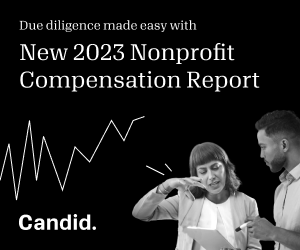Climate finance takes center stage

If we are to secure a livable future, we need at least $4.3 trillion in annual finance flows globally by 2030 to fund efforts to help address climate change. Yet current investments fall far short of that benchmark. Estimates by Climate Policy Initiative indicate that total global finance flows in 2021 reached between $850 billion and $940 billion. While that represents a significant increase from prior years, much more funding is required to rapidly steer the world toward halving emissions by the end of this decade.
Climate finance plays a vital role in translating climate aspirations into tangible actions. It serves as critical capital for countries—particularly those with emerging and developing economies—to adapt to the changing climate, reduce harmful pollution, build resilience, and contribute to sustainable development. A report by the Independent High-Level Expert Group on Climate Finance estimates that the scale of need for emerging and developing economies (other than China) alone is $1 trillion per year in investments by 2025.
Although there are clear science-based pathways to achieving global climate goals, the reality is that we need both greater ambition and much more finance for implementation.
Take renewables, for example, which are the cheapest form of power today and, for the first time, are seeing greater global investment than oil production. A lower levelized cost of energy (the average net present cost of electricity generation for a generator over its lifetime) doesn’t necessarily make it easier for cash-strapped countries to absorb high up-front development costs. The right enabling environments must be created, business models catalyzed, and risk capital deployed to ensure that finance flows at scale so clean power projects are also the most practical option.
Philanthropy is already taking steps to address these hurdles, including the Global Energy Alliance for People and Planet (GEAPP), a group of philanthropy, governments in emerging and developed economies, and technology, policy, and financing partners, which has committed $10 billion to expand clean energy access during the next decade.
However, simply increasing funding for climate action is not enough. Governments need to use all of the tools they have to shift and mobilize finance in line with the goals of the Paris Agreement. The broken promise of mobilizing $100 billion a year in climate finance to support developing countries looms large—as does inflation, higher borrowing costs, and the rising number of climate-induced disasters, all of which are putting many countries at risk of a debt crisis. These debt crises are only exacerbated by more severe and frequent climate impacts, including devastating tropical storms, heatwaves, wildfires, floods, and droughts.
Climate finance has often been relegated to the sidelines of global dialogues without discussion, let alone action, proportional to the need. But there are signs this is finally changing. COP27 brought unexpected breakthroughs with the establishment of a loss and damage facility and the introduction of the Bridgetown Initiative by Prime Minister Mia Mottley of Barbados, bringing with it fresh ideas for changing risk ratings to lower interest rates and offering flexible lending terms so countries can pause debt payments to rebuild after disasters. And for the first time, climate finance, including the need to reform multilateral development banks (MDBs), was a central focus of the World Bank and International Monetary Fund convening this April.
These shifts should not be underestimated. They represent the beginnings of a flywheel to get climate finance flowing on a meaningful scale and in a way that truly benefits people in their daily lives.
Philanthropy has a track record of providing catalytic capital to support governments in addressing climate-related financial risk and helping scale public and private investments in climate action. Over the last five years, foundations have provided an average of $115 million annually to catalyze action on sustainable finance. The majority has been allocated to global strategies ($60 million), followed by the U.S. and Canada ($16 million), China ($12 million), and Europe ($12 million). Philanthropy-supported efforts include the Network of Central Banks and Supervisors for Greening the Financial System (NGSF), which represents 125 central banks and supervisor members and 19 observer institutions, all of whom have free access to a range of research and analytical tools that can help them understand and prepare for climate change’s effects on financial stability. Additionally, the Glasgow Finance Alliance for Net Zero (GFANZ) is working with leading coalitions of financial institutions to develop the tools and methodologies needed to turn their net-zero commitments into action.
As countries face an increasingly tight fiscal space, philanthropic capital—with its ability to be nimble, target opportunities, and leverage greater public and private investment—is more important than ever. There is an urgent need for philanthropy to nurture and harness momentum on climate finance for greater impact. And many promising ideas are being developed that could benefit from more philanthropic engagement.
Emerging innovations to close the climate finance gap
With funding not flowing as fast as it needs to, some actors are exploring creative avenues to mobilize climate capital. There are growing calls for windfall taxes on oil companies fueled by their record-setting profits of $200 billion last year, with a number of European countries already moving ahead to implement such taxes.
Or, consider the European Union’s emissions trading system, which is already raising billions of euros that are largely being directed toward climate efforts; recently, the system has been amended to cover maritime shipping, including part of international voyages, an approach that could be extended to aviation. And over the next couple of years, the International Maritime Organization will consider a global carbon levy on shipping that could raise significant revenue for climate finance.
A recent report from the World Bank reveals the wider growth of carbon pricing and emissions trading mechanisms. Over 70 direct carbon pricing instruments in countries or regions around the world now cover almost a quarter of global greenhouse gas emissions, and revenues from carbon taxes and emissions trading systems have reached a record high of nearly $95 billion.
At the same time, there’s also work to be done in voluntary carbon markets to support the development of consensus-driven voluntary standards to ensure environmental integrity, equity, and financeability, and that may also be a bridge toward regulatory frameworks. Philanthropy has been supporting the development of such standards, including through the Integrity Council for the Voluntary Carbon Market (IC-VCM), which is developing standards for the issuance of carbon credits, and the Voluntary Carbon Markets Integrity (VCMI), an initiative focused on the buyers of credits with the aim of driving credible participation in these markets.
Philanthropy is also helping to explore new opportunities for scaling carbon credits by working in partnership with the public and private sectors. For example, the Energy Transition Accelerator (ETA) launched at COP27 is a joint initiative of the U.S. Department of State, The Rockefeller Foundation, and the Bezos Earth Fund that aims to use the proceeds from high-integrity voluntary carbon markets to finance the clean energy transition in developing countries. If we can get this right, it has the potential to deliver the urgently needed financing to support this rapid transition.
This year, climate finance will remain a crucial topic in global climate talks. Key events to keep an eye on for progress include the Summit for a New Global Financial Pact later this month in Paris, where dialogues will center on intersectional finance solutions for climate, health, and poverty, as well as the Africa Climate Summit in Nairobi, where financing climate action in the Global South will be a major focus, and Climate Week in New York City this September. Also, the World Bank and IMF Annual Meeting in Morocco this October is another event to watch out for to see how the efforts to reform MDBs take shape, as well as the broader shifts the World Bank makes to support climate action under the new leadership of Ajay Banga.
Sustainable finance is a vital enabler of global climate action. With renewed energy from governments and businesses alike to get climate finance right, philanthropy has a can’t-miss opportunity to play a pivotal part in catalyzing action so international finance can start flowing at the scale we need while there is still time.
Helen Mountford, president and CEO of ClimateWorks Foundation, has over 25 years of global experience at the intersection of environmental action, economic development, and climate policy. Shelagh Whitley, senior director of sustainable finance program at ClimateWorks Foundation, has worked on sustainable finance, carbon markets, and climate policy for two decades.







Building equity and justice: An alternative model for grantmaking for environmental organizations